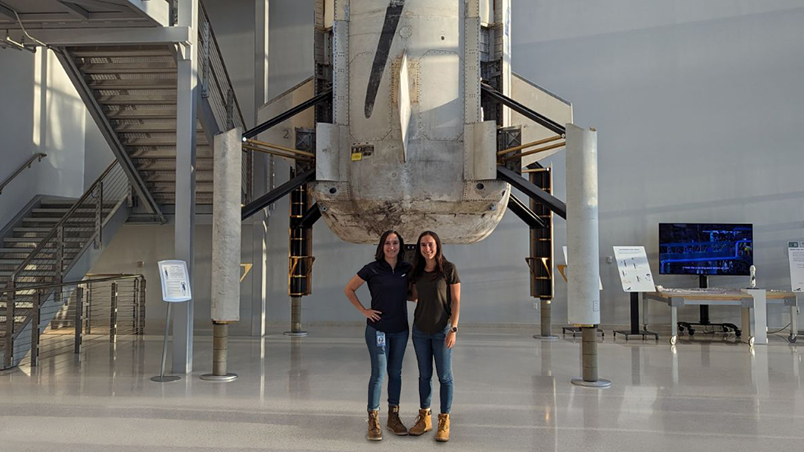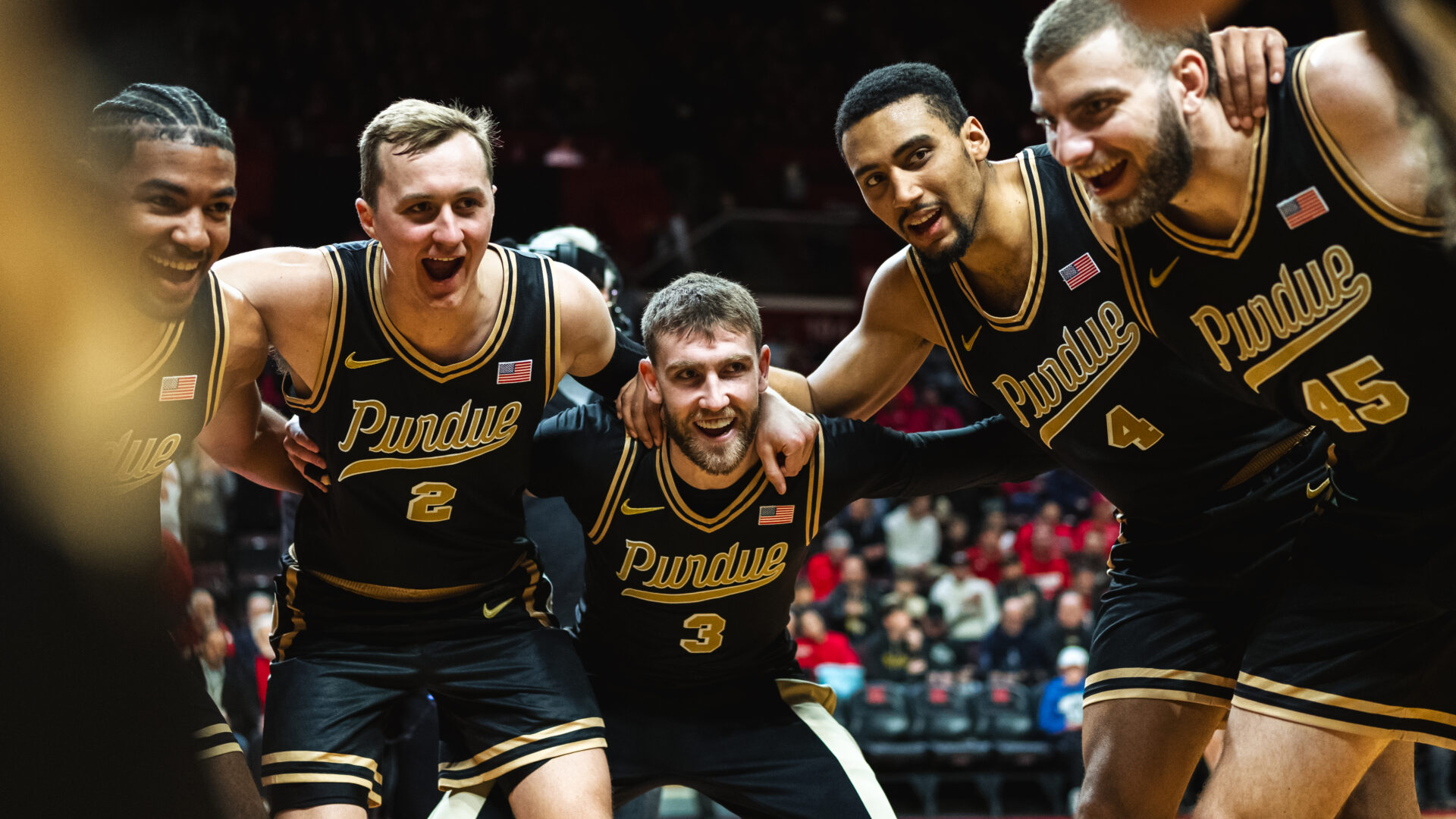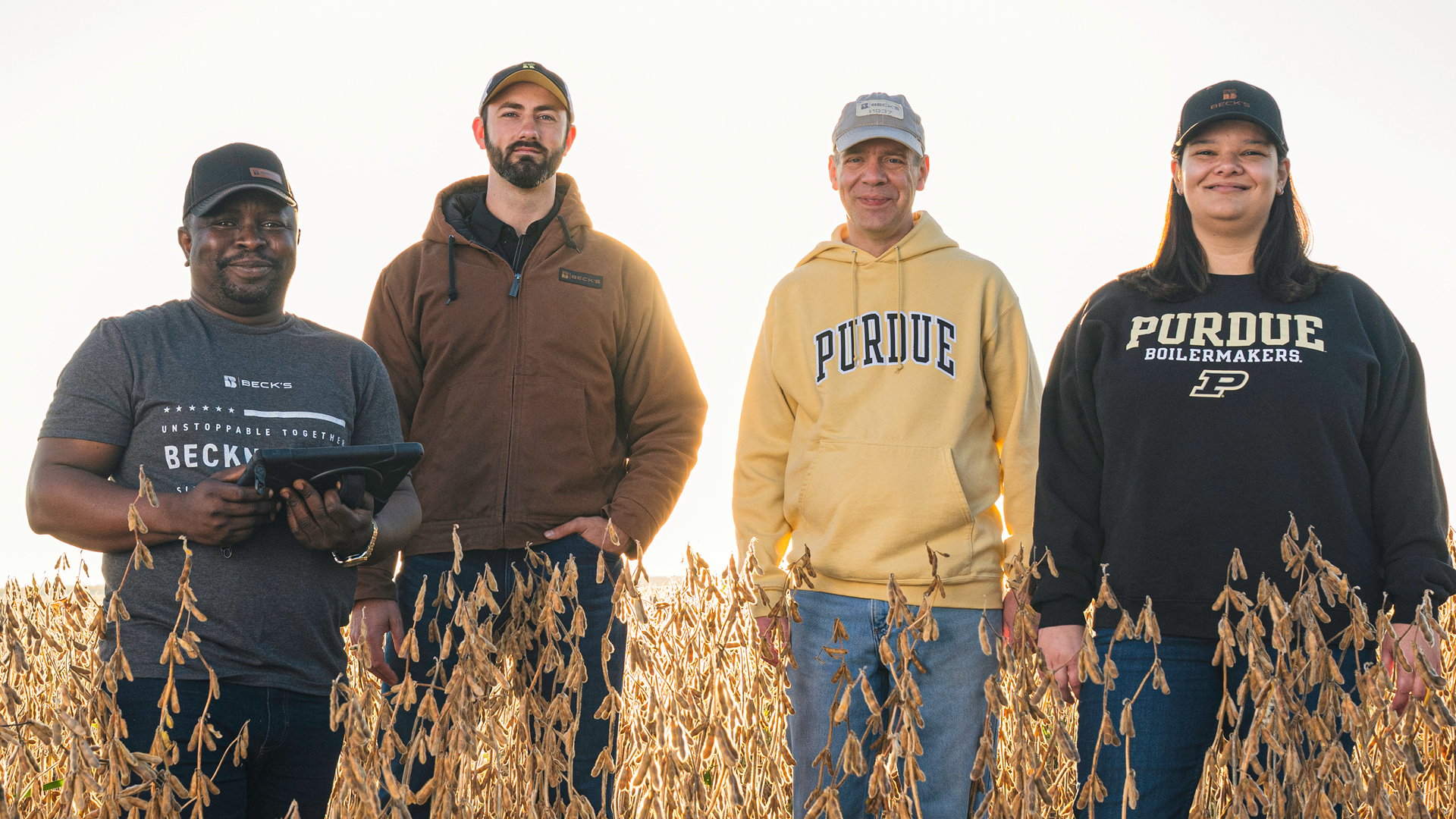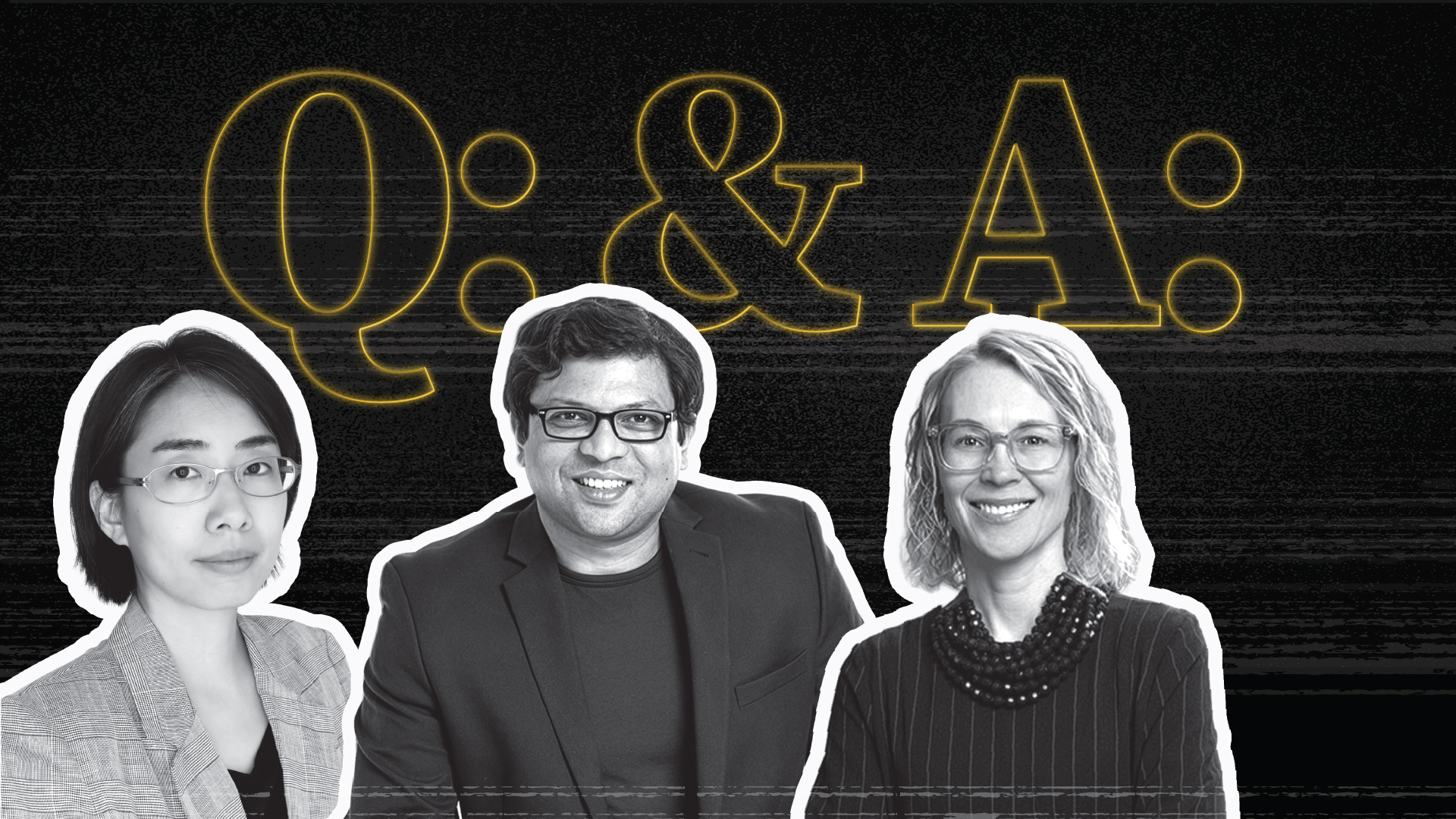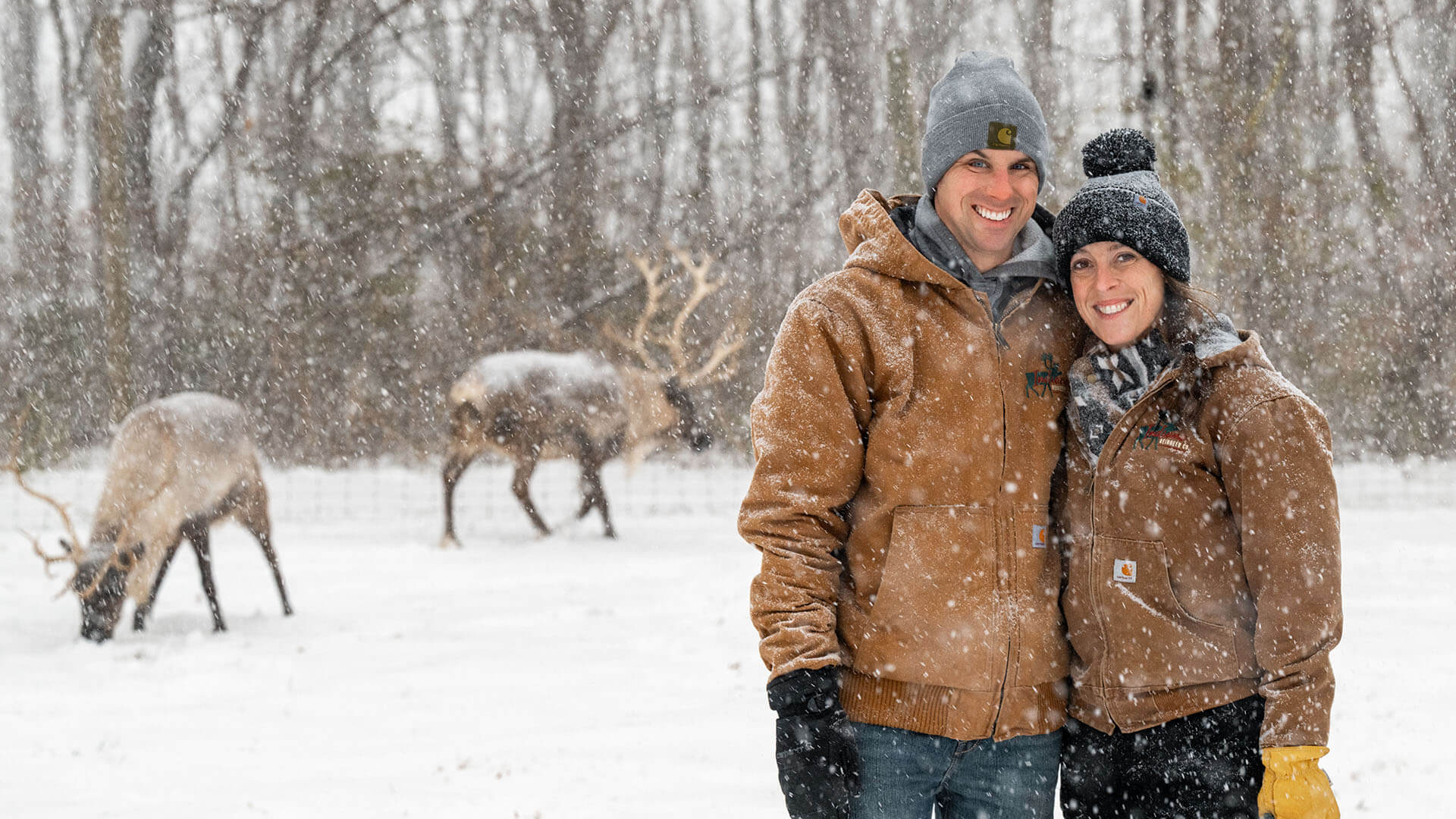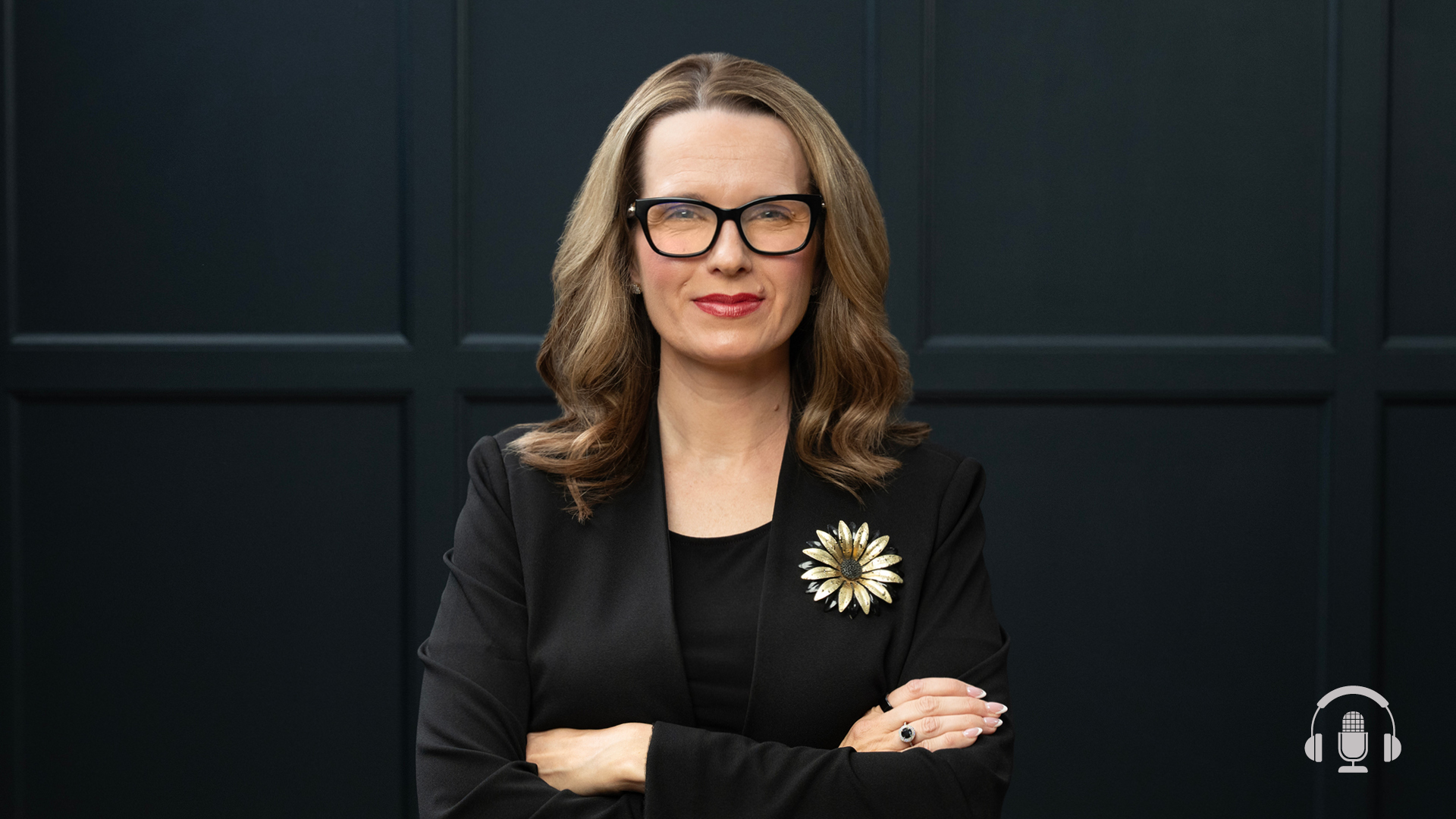Identical twin alumnae help Blue Origin, New Glenn shoot for the stars
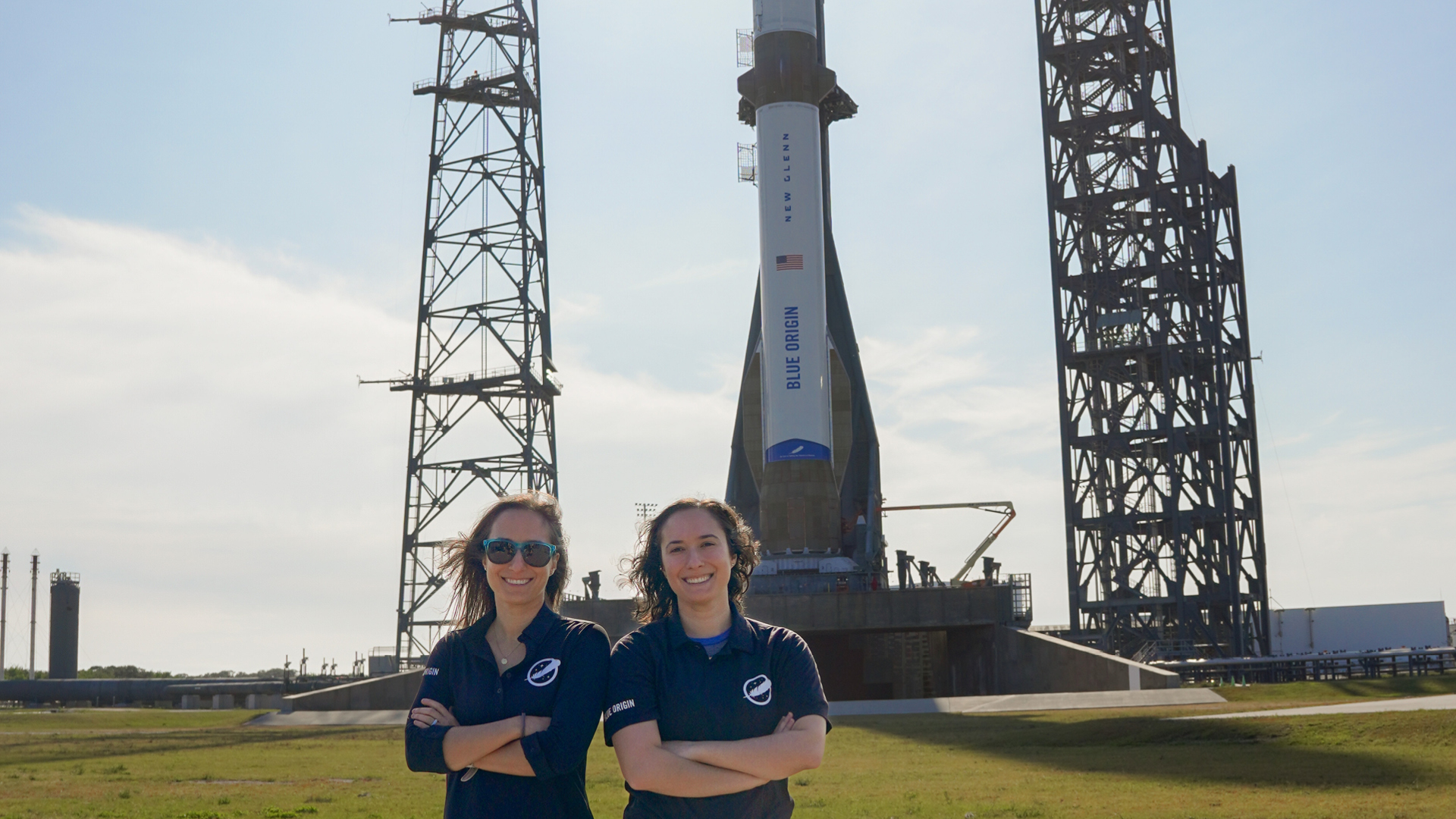
Sisters Dayle, left, and Claire Alexander both work at Blue Origin as senior propulsion engineers responsible for the New Glenn rocket’s upper-stage BE-3U engines. (Photo courtesy of Dayle and Claire Alexander)
Propulsion engineers Dayle and Claire Alexander helped the company’s rocket reach orbit on its first launch attempt
While monitoring the proceedings from computer consoles at Cape Canaveral, Dayle and Claire Alexander were understandably thrilled to watch Blue Origin’s New Glenn rocket soar into orbit.
Successfully reaching orbit was a critical step in Blue Origin’s advancement in the commercial space race, and on Jan. 16, the New Glenn team got there on their first launch attempt. As senior propulsion engineers responsible for New Glenn’s upper-stage BE-3U engines, the Alexanders had contributed to this massive accomplishment.
“It was the first time for that rocket, this team and for the company — the first time that Blue Origin got into orbit, so it was a very big deal,” explains Claire (BSAAE ’16, MSAAE ’22).
And yet the thrill of the moment was not a new experience for the Alexanders.
Prior to joining Blue Origin a couple of months apart in 2023, they had separately taken part in milestone space events. While working as a NASA propulsion flight controller in Houston, Claire supported the Artemis I launch in 2022 and several additional flights in partnership with SpaceX. Meanwhile, Dayle was on console for three flights at Virgin Orbit and twice was a member of the flight crew for the company’s modified Boeing 747, “Cosmic Girl,” that it used to conduct mobile air launches.
“There were a lot of similarities and a couple differences, but it didn’t feel brand new,” says Dayle (BSAAE ’16, MSAAE ’18). “This was a way different rocket, a more complicated rocket, than I’d worked on before. But it felt like I was prepared to be there.”
She just never expected to be there alongside her identical twin sister.
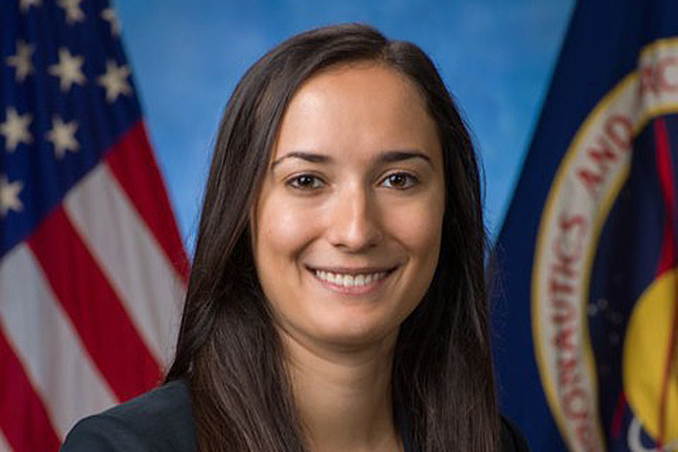
During one of the times at Space Camp, I remember hearing the term aerospace engineering, and I thought, ‘Oh, we can do this for a living?’ And so that was where it was like, ‘All right, that’s what we’re gonna do.’
Claire Alexander (BSAAE ’16, MSAAE ’22)
On how she and her sister Dayle decided to pursue their future profession
‘That’s what we’re gonna do’
As one might expect, Dayle and Claire basically did everything together while growing up in Marietta, Georgia. That includes developing a mutual interest in space during an elementary school field trip to a Challenger Center museum, only to have that interest become a passion over each of the next six summers while participating in Space Camp at the U.S. Space & Rocket Center in Huntsville, Alabama.
“During one of the times at Space Camp, I remember hearing the term aerospace engineering, and I thought, ‘Oh, we can do this for a living?’” Claire recalls. “And so that was where it was like, ‘All right, that’s what we’re gonna do.’”
That’s how they wound up enrolling in the world-class aeronautical and astronautical engineering program at Purdue, where their paths began to diverge somewhat before their unanticipated professional reunion at Blue Origin.
College is often a time during which students establish their identity. Claire especially felt that it was important that she and Dayle begin experiencing the world as individuals while at Purdue.
They both performed in the Purdue “All-American” Marching Band — Dayle played baritone and Claire, tenor saxophone — and participated in multiple musical ensembles and organizations. Dayle even met her husband, Matt, in the band. But they also formed their own friend groups and scheduled different classes even though they shared the same major.
“I needed to see what life was like when I didn’t have my sister with me all the time,” Claire says. “I thought maybe I could become a stronger person if I had a little more individuality.”
But that doesn’t mean the Alexanders stopped being each other’s biggest supporters. The sisters cheered each other on as they navigated a challenging path through rigorous engineering studies, opportunities to conduct research at Purdue’s prestigious Maurice J. Zucrow Laboratories and a shared internship that helped launch their careers.
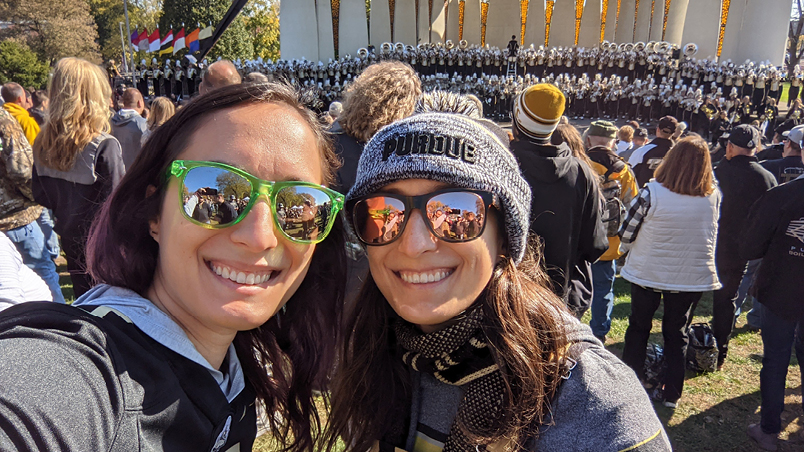
A useful internship
Never underestimate the power of band networking.
Like many Purdue engineering students, the Alexanders vividly remember the frustration of failing to land a co-op or internship in their first couple of years as Boilermakers. They would attend roundtables and career fairs like most of their classmates, but the competition for these slots was fierce.
But then Dayle connected with a propulsion engineer from a small company called XCOR Aerospace who also happened to be a Purdue graduate and band alum. While she was at it, Dayle shared her sister’s resume, and they both were hired for a six-month internship that provided a wealth of hands-on learning opportunities.
“That connection just gave us a little leg in the door, a little familiarity, and it was a really great company for us to work with — very small,” Dayle says of the now-defunct aerospace organization. “We interns were designing flight hardware on a rocket, which I’m not sure would have been true at most other companies.”
Claire agrees with her sister’s assessment, adding that she credits much of her early career success to the experience she gained during that internship.
“We were able to put so much on a resume,” she says. “We would sit on the CAD model and design something. We do the element analysis; we would do the drawings; then we’d go to the shop and make it and test it. We’d be from the beginning to end part of these little pieces that we were building, so we could put all that on our resume. And it’s just not something that happens if you intern at a bigger company for three months.”
Working at Zucrow
The XCOR Aerospace internship was also important to the Alexanders because it helped them get a foot in a very important door — to professor Timothée Pourpoint’s research lab at Zucrow — once they returned to West Lafayette.
“I get a dozen emails a week from students who want to work in Zucrow with me, and I know my colleagues get the same number,” Pourpoint says. “We get a lot of requests, and that’s great, but we can’t accommodate all these students, so we have to filter them. One of the filters that I use is what the students do before contacting me, and the sort of internships that they’ve had and experiences they’ve had in a professional setting. When I looked at Dayle’s resume the first time she contacted me, it impressed me — working at aerospace companies, doing relevant aerospace work.
“It’s not easy to get those internships. They really had a passion for this community, for this work that we do.”
The sisters worked as undergraduate research technicians in Pourpoint’s Hypergolic Propellants Laboratory, where their responsibilities included handling highly volatile chemicals that ignite upon contact. The lab’s website features a side-by-side video that compares the time it takes for a human eye to blink to the much faster ignition that occurs when a single droplet of red fuming nitric acid contacts a pool of monomethylhydrazine.
The blinking eye in the video belongs to Claire.
“Having Purdue on your resume is big for this industry, but also having Zucrow on your resume is big,” Dayle says. “Zucrow is a really well-established lab, and you can do stuff there that you can’t do anywhere else, like the hyperbolic and monopropellant work that they do there. So many university facilities are just not equipped for that.”
The sisters went their separate ways after completing their bachelor’s degrees in 2016 and thought it seemed unlikely that they’d work together again.
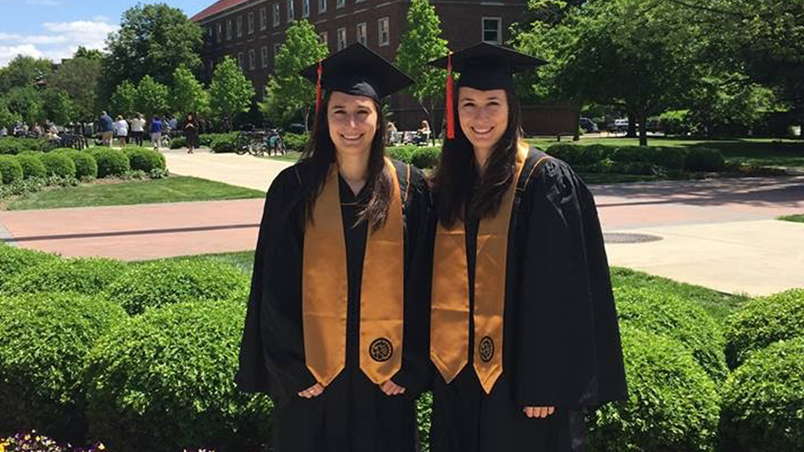
Claire accepted a position at NASA and went to work on the governmental side of the space industry, while Dayle stayed at Purdue to continue her studies in graduate school. She also continued at Zucrow as a graduate research assistant, working under professor Stephen Heister on a project in which she designed and built an experimental thermoacoustic engine for research sponsor Rolls-Royce.
Her efforts laid the groundwork for considerable success that would follow as the project progressed.
“Dayle was very adept from the start,” recalls Heister, who recently retired after three decades spent developing Zucrow into one of the world’s premier academic propulsion facilities. “She obviously had some previous mechanical experience. She came into the lab knowing what some of the things were and came up to speed fairly quickly. She was an experimentalist, but she also was a very good analyst, and could analyze her own data, write code and do the other side of engineering. She was comfortable doing both.”
Once Dayle completed her master’s program in 2018, she found that working on the commercial side of the space industry was a better fit. That is, until Virgin Orbit filed for bankruptcy in April 2023, leaving her temporarily out of work.
But it just so happened that Claire had recently accepted a new position at Blue Origin, and this time she was the one who was able to help her sibling land a gig.
“I guess it’s the ultimate networking, having a family member in the industry,” Claire says.
Working together again
Dayle didn’t need much help, however. Claire’s manager at Blue Origin had previously worked with Dayle at Virgin Orbit and was interested in hiring both sisters from the start. When Virgin Orbit went out of business, the question wasn’t whether he wanted to hire Dayle. He wanted to know how the sisters felt about working on the same four-person team — all of whom are Purdue and Zucrow alums.
The Alexanders were excited about the opportunity, but it also came with its share of early growing pains. Thanks to her three-month head start, Claire was already well versed in the team’s activities, forcing Dayle to play catch-up while searching for ways that she could contribute.
“I was the last person to join the team, so I felt behind already,” Dayle says. “It took time for me to feel comfortable about it. I guess I felt a bit competitive since she had already been so well established there, and that part felt weird. I had never really felt that before. But I don’t think it caused any problems. We get along great, and we do work well together because we’re so comfortable with each other.”
That comfort was another consideration as they worked together for the first time in a professional capacity. They had to learn how to interact as colleagues and not as siblings or best friends.
The sisters made the necessary adjustments, though, and found that the positive aspects of working together outweighed the occasionally awkward moments. And now they have collectively contributed to one of Blue Origin’s greatest accomplishments — a functional heavy-lift launch vehicle that will someday shuttle the cargo necessary to sustain human presence on other celestial bodies.
“The things that we can accomplish 10 years from now and then 20 years from now, I think it’s going to be really cool,” Dayle says. “We’re just going to be establishing new stuff in space that nobody’s seen before to start the foundation of what everybody has always imagined in sci-fi movies: people living on space stations, people living on different planets. You’ve got to start somewhere, and this is the start of that. New Glenn is going to enable that, essentially.”
Like its competitors with SpaceX’s Starship, the New Glenn team intends to develop reusable technology that will help pave the way for the advancements Dayle describes.
“If both New Glenn and Starship are flying frequently, it will transform the whole space economy,” Heister says. “We will have space hotels, and with the cost to fly things to orbit dropping as a result of the payload capabilities of these vehicles, whole new businesses and whole new industries will spring up. It’s an exciting time for aerospace in general.”

The people becoming astronauts and making a difference in the industry are now our peers. And seeing this happening around us makes us feel a part of it — like we’re also contributing to the growth of the industry and Purdue’s legacy in it.
Dayle Alexander (BSAAE ’16, MSAAE ’18)
On the astronaut dream she shares with her sister, Claire
Astronaut dreams
While the sisters never expected to work together like they do now, there was always one professional pursuit that they hoped to someday share. In fact, it remains a dream to this day.
They’d love to become astronauts.
They know the odds are stacked against them. Heister calls it “probably the most selective position you could ever think of,” adding that he’s never had a student or colleague accepted into the astronaut program, although some have come close.
But defying steep odds is by now a common feature of the sisters’ story. Only about 3% of American live births are identical twins. What percentage of those kids wind up gaining admittance to the same elite university, sharing the same rigorous major, working in the same world-renowned laboratory and finally joining the same team that helps launch a company’s first rocket into orbit?
“It’s not something that was a likely thing to happen, for sure,” Claire says of their Blue Origin reunion. “We’ve always joked that if we became astronauts, eventually we’d end up working together, but we never thought it would happen in the in-between.”
Perhaps someday they will explore space together, as well, following alumnae like NASA astronaut Loral O’Hara and commercial astronauts Sirisha Bandla, Beth Moses and Audrey Powers who have joined Purdue’s Cradle of Astronauts in recent years.
“It’s not just people flying for NASA anymore. Now it’s people flying for Virgin Galactic and for Blue Origin. It’s just going to keep growing, and that makes you feel like you can do it,” Dayle says. “The people becoming astronauts and making a difference in the industry are now our peers. And seeing this happening around us makes us feel a part of it — like we’re also contributing to the growth of the industry and Purdue’s legacy in it.”
“Our stories are not complete yet. We’re hoping to be one of those people someday.”
